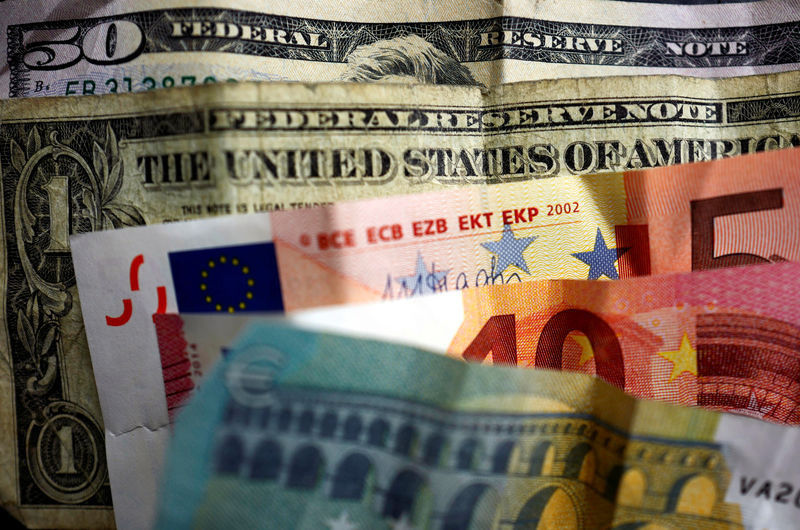Capstone Holding Corp. lowers convertible note conversion price to $1.00
Investing.com - The US dollar weakened Friday after US President Donald Trump indicated he would call for lower interest rates, while the euro surged after better than expected economic activity data.
At 04:35 ET (09:35 GMT), the Dollar Index, which tracks the greenback against a basket of six other currencies, traded 0.6% lower to 107.205, down more than 1% this week.
Dollar weakens on Trump comments
The dollar has headed lower Friday after Trump, speaking online at the World Economic Forum in Davos, Switzerland, said he will call for lower interest rates from the Federal Reserve.
"I'll demand that interest rates drop immediately," he said, in a virtual address. "Likewise, they should be dropping all over the world. Interest rates should follow us all over."
This probably suggests the pressure shouldn’t be felt just yet when the FOMC meets next week, said ING analysts, in a note. “We expect a decision to hold rates steady next week will not be the trigger of another round of USD longs unwinding.”
The US currency has been on the backfoot this week as widely expected tariff announcements from Trump failed to materialise after his inauguration.
“This seems to feed into the growing sense that Trump is underdelivering on protectionism compared to pre-inauguration remarks, and that ultimately some of those tariff threats may not materialise as long as some concessions are made on trade,” said ING.
Euro gains on PMI data
In Europe, EUR/USD gained 0.8% to 1.0500, boosted by better than expected eurozone activity data for January, as the region returned to growth.
HCOB's preliminary composite eurozone Purchasing Managers' Index rose to 50.2 in January from December's 49.6, nudging just above the 50 mark separating growth from contraction.
An index measuring the bloc's dominant services industry dipped to 51.4 from 51.6, but remained above breakeven, while the manufacturing PMI rose to 46.1, from a revised 45.1, still in contraction.
European Central Bank President Christine Lagarde is set to speak at Davos later in the session, having mentioned the need for gradual rate cuts earlier in the week, ahead of next week’s policy-setting meeting.
“With external uncertainty staying high and the prospects of European Central Bank cuts already factored in, the case for a rebound in the eurozone’s business confidence in the short term is not very compelling. This should ultimately allow the ECB to stick to the plan of taking rates towards 2% this year,” said ING.
GBP/USD traded 0.7% higher to 1.2436, receiving a boost after the January PMI data came in stronger than expected, adding to the hopes of gradual economic recovery.
The S&P Global's preliminary composite UK Purchasing Managers' Index rose to 50.9 in January from December's 50.4, remaining in expansion territory.
BOJ meeting looms large
In Asia, USD/JPY traded 0.5% lower to 155.23, after the Bank of Japan increased interest rates by 25 basis points earlier Friday, while projecting that inflation will stay supported and close to its annual target in the years ahead.
The central bank indicated that it plans additional rate hikes if its economic outlook aligns with expectations in the coming months.
USD/CNY traded 0.7% lower to 7.2385, with the Chinese currency helped by the prospects of gradual imposition of US tariffs, with Trump sounding more conciliatory of late.
